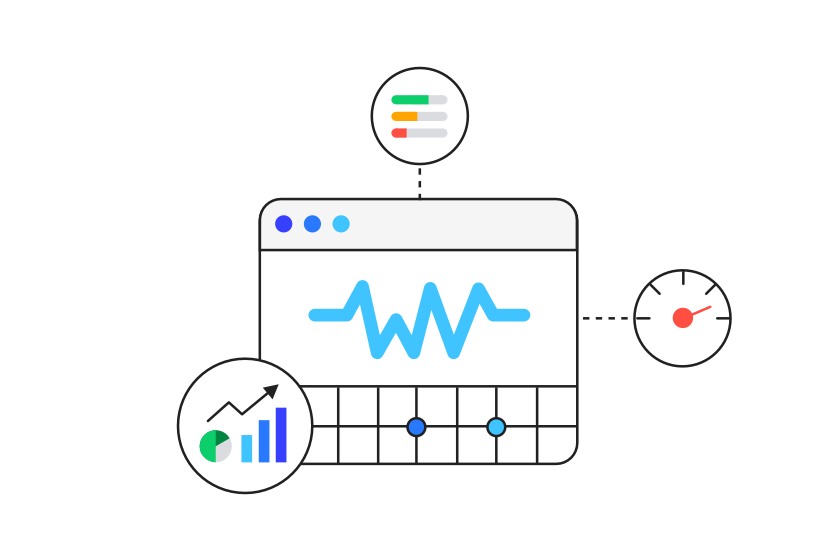What are Core Web Vitals?
These are real-world experience metrics that Google is looking at that answer things like: How fast does the page load? How fast is it interactive? How fast is it stable? So basically, when visitors are using your web page on a mobile or a desktop device, what's that experience like in terms of speed, how fast can they interact with it, things like that.
Now it's joining a group of metrics that Google calls Page Experience signals. It's not really standalone. It's grouped in with these Page Experience metrics that are separate from the text on the page. These are signals like mobile-friendliness, HTTPS, intrusive interstitials, which are those pop-ups that come on and appear.
It's not so much about the page's text, which are traditional ranking signals, but more about the user experience and what it's like, how pleasant it is to use the page, how useful it is. These are especially important on mobile when sometimes the speed isn't as high. So that's what Google measures here. So that's what it is.
Where is this going to affect rankings?
Well, it's going to affect all regular search results, mobile and desktop, based on specific criteria. But also, and this is an important point, Core Web Vitals are going to become criteria to appear in Google Top Stories. These are the news results that usually appear at the top of search results.
Previously, AMP was a requirement to appear in those Top Stories. AMP is going away. So you still have to meet the needs for regular Google News inclusion, but AMP is not going to be a requirement anymore to appear in Top Stories. But you are going to have to meet a minimum threshold of Core Web Vitals.
So that's an important point. So this could potentially affect a lot of ranking results.
When is it going to happen?
Well, Google has told us that it's going to happen sometime in 2021. Because of COVID-19, they have pushed back the release of this within the algorithm, and they want to give webmasters extra time to prepare.
They have promised us at least six months' notice to get ready. As of this recording today, we have not received that six-month notice. When that updates, we will update this post to let you know when that will be. So anytime Google announces a ranking factor change, the big question is:
How big of a change is this going to be?
How much do I have to worry about these metrics, and how big of results are we going to see a shift in Google SERPs? Well, it's important to keep in mind that Google has hundreds of ranking signals. So the impact of any one signal is usually not that great. That said, if your site is particularly poor at some of these metrics, it could make a difference.
If you're in a highly competitive environment, competing against people for highly competitive terms, these can make a difference. So it probably will not be huge based on experience with other ranking signals, but it is still something that we might want to address, especially if you're doing pretty poorly.
The other thing to consider, some Google signals have an outsized impact beyond their actual ranking factors. Things like page speed are probably a pretty small signal, but as users experience it, it can have outsized influence. Google's own studies show that for pages that meet these thresholds of Core Web Vitals, visitors are 24% less likely to abandon the site.
Even without Core Web Vitals being an official Google ranking factor, it can still be important because it provides a better user experience. Twenty-four percent is like gaining 24% more traffic without doing anything, simply by making your site a little more usable. So even without that, it's probably still something we want to consider.
Three signals for Core Web Vitals
So I want to jump briefly into the specifics of Core Web Vitals, what they're measuring. I think people get a little hung up on these because they're very technical—their eyes kind of glaze over when you talk about them. So my advice would be to let's not get hung up on the actual specifics. But I think it is important to understand exactly what's being measured in layman's terms.
More importantly, we want to talk about measuring, identifying problems, and fixing these things if they happen to be wrong. So very briefly, three signals go into Core Web Vitals.
1. Largest contentful paint (LCP)
The first being the largest contentful paint (LCP). This basically asks, in layman's terms, how fast does the page load? Straightforward concept. So this is hugely influenced by the render time, the largest image, video, text in the viewport.
That's what Google is looking at. Whether it be a desktop page or a mobile page, the largest thing in the viewport, the largest piece of content, whether it be an image, video, or text, how fast does that take to load? Very simple. That can be influenced by your server time, your CSS, JavaScript, client-side rendering.
All of these can play a part. So how fast does it load?
2. Cumulative layout shift (CLS)
The second thing, cumulative layout shift (CLS). Google is asking this question, how fast is the page stable? Now I'm sure we've all had an experience where we've loaded a page on our mobile phone, we go to click a button, and at the last second, it shifts, and we hit something else or something in the page layout has an unexpected layout shift.
That's a poor user experience. So that's what Google measures with cumulative layout shift. How fast is everything stable? The number one reason that things aren't stable is that image sizes often aren't defined. So if you have an image and it's 400 pixels wide and tall, those need to be defined in the HTML. There are other reasons as well, such as animations and things like that.
But that's what they're measuring, cumulative layout shift.
3. First input delay (FID)
The third thing within these Core Web Vitals metrics is first input delay (FID). So this question is basically asking, how fast is the page interactive? To put it another way, when a user clicks on something, a button, or a JavaScript event, how fast can the browser start to process that and produce a result?
It's not a good experience when you click on something, and nothing happens, or it's very slow. So that's what that's measuring. That can depend on your JavaScript, third-party code, and there are different ways to dig in and fix those. So these three all together are Core Web Vitals and play into the page experience signals. So like I said, let's not get hung up on these.



Leave a comment